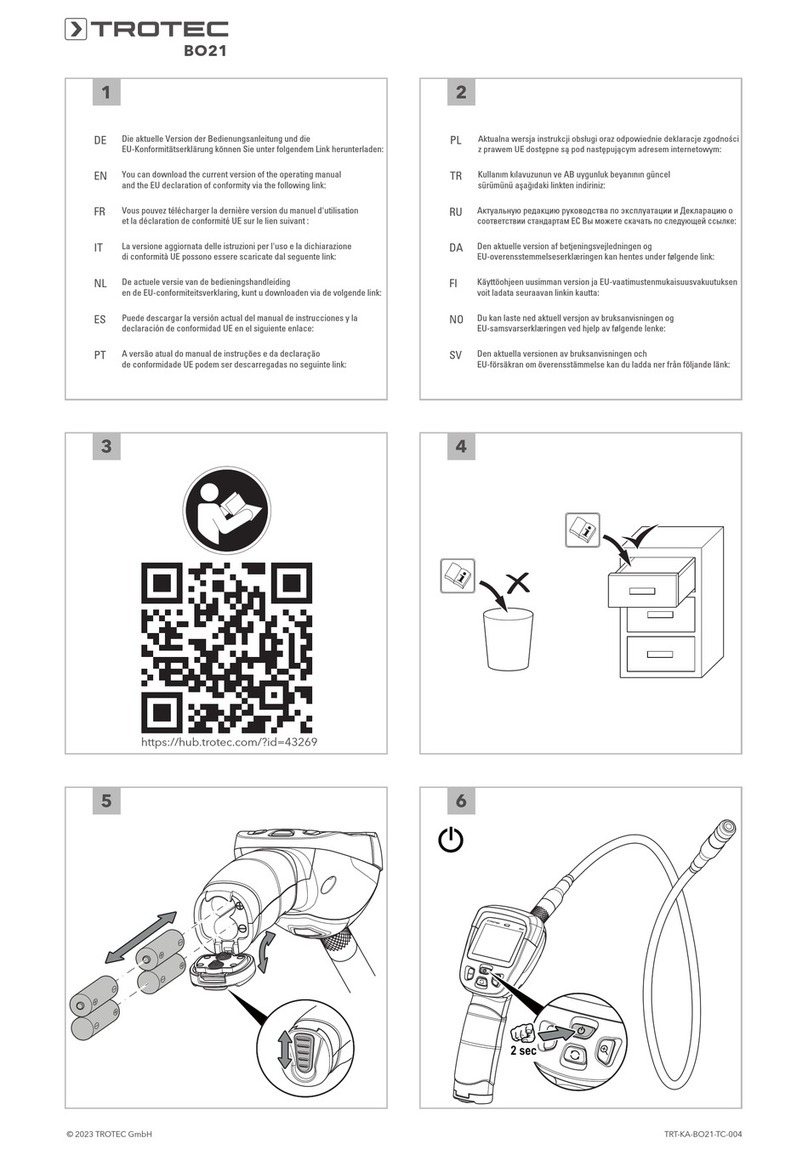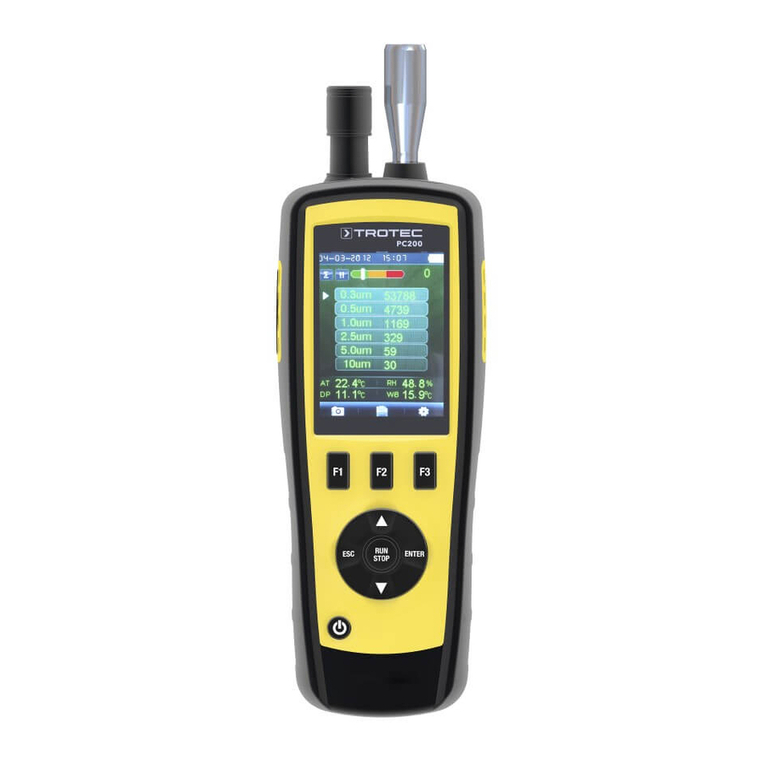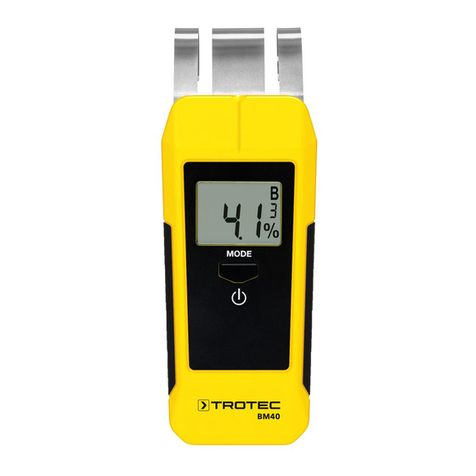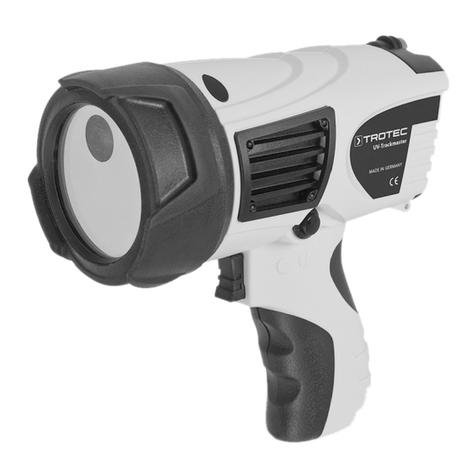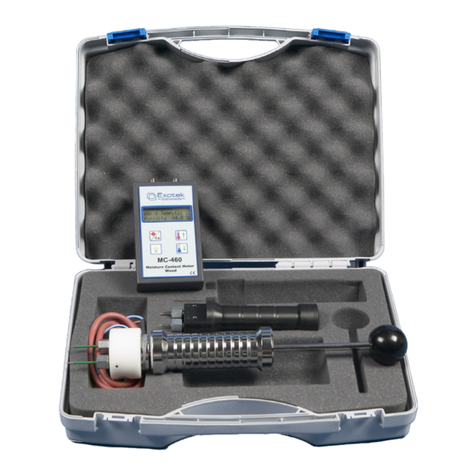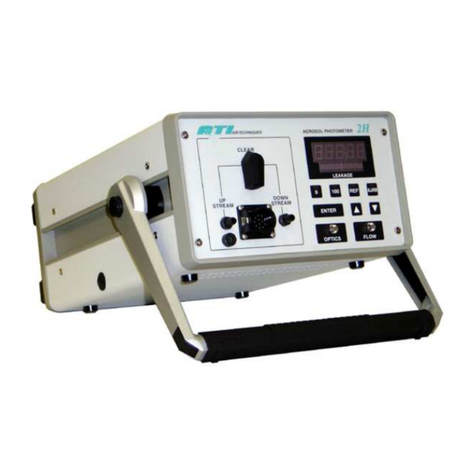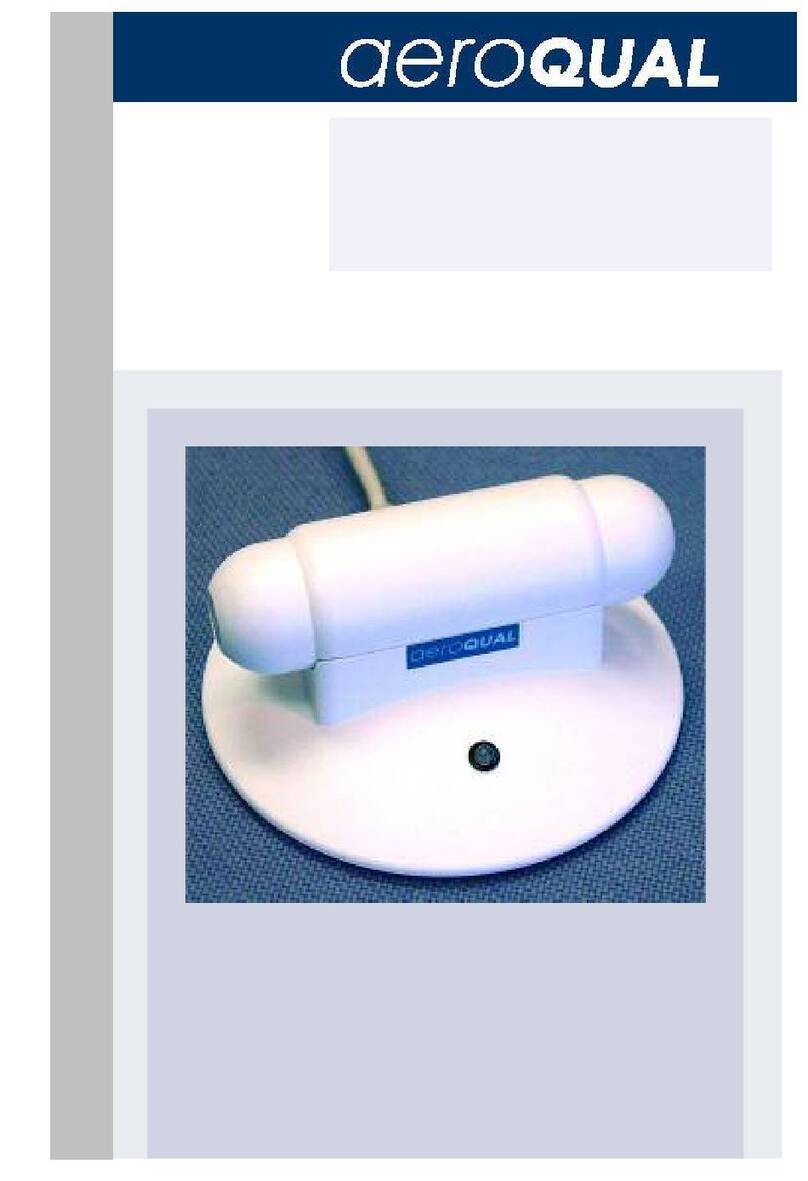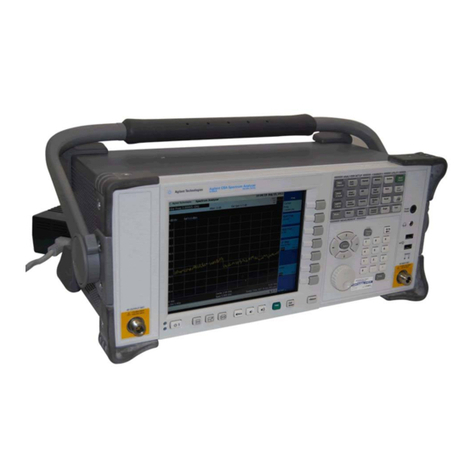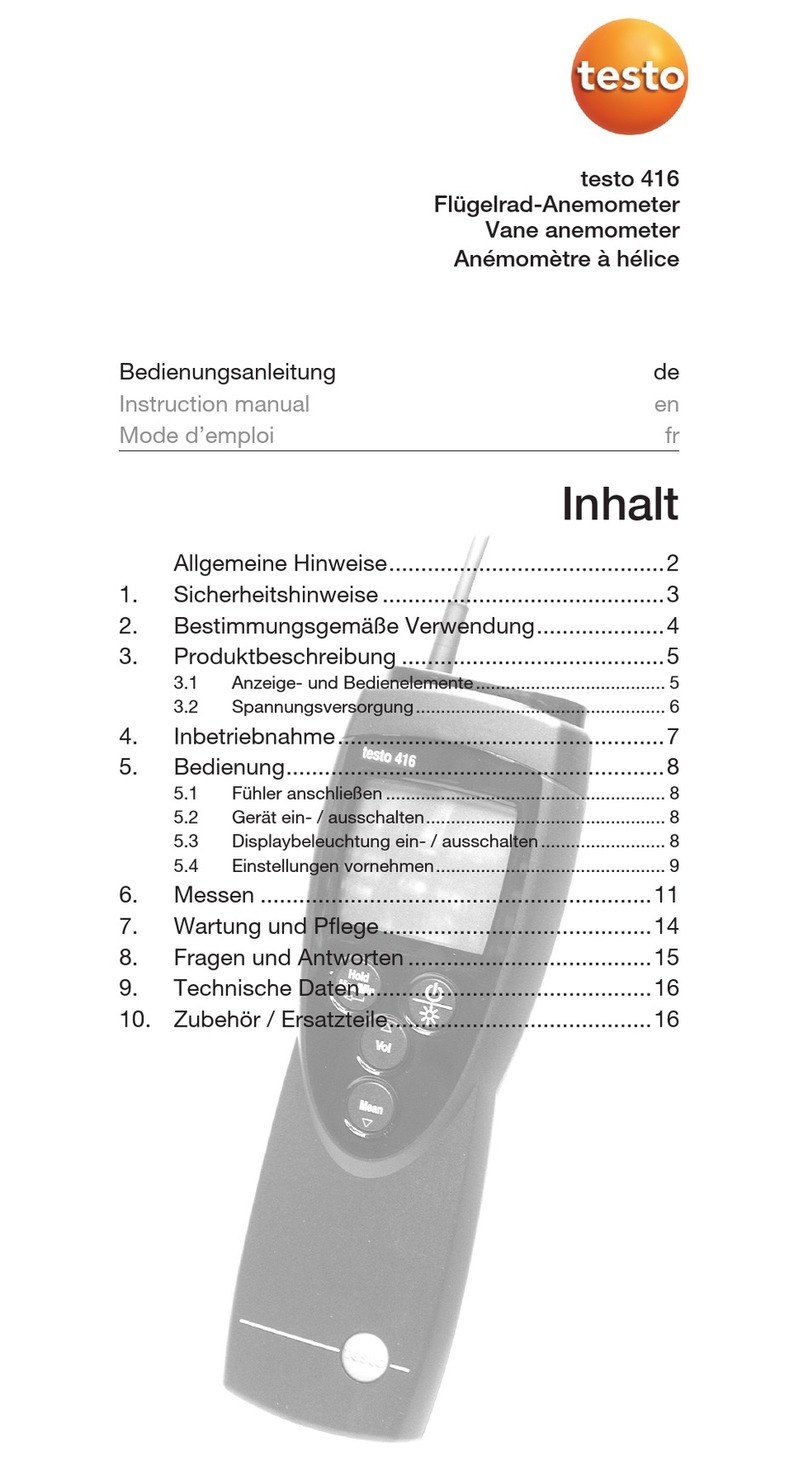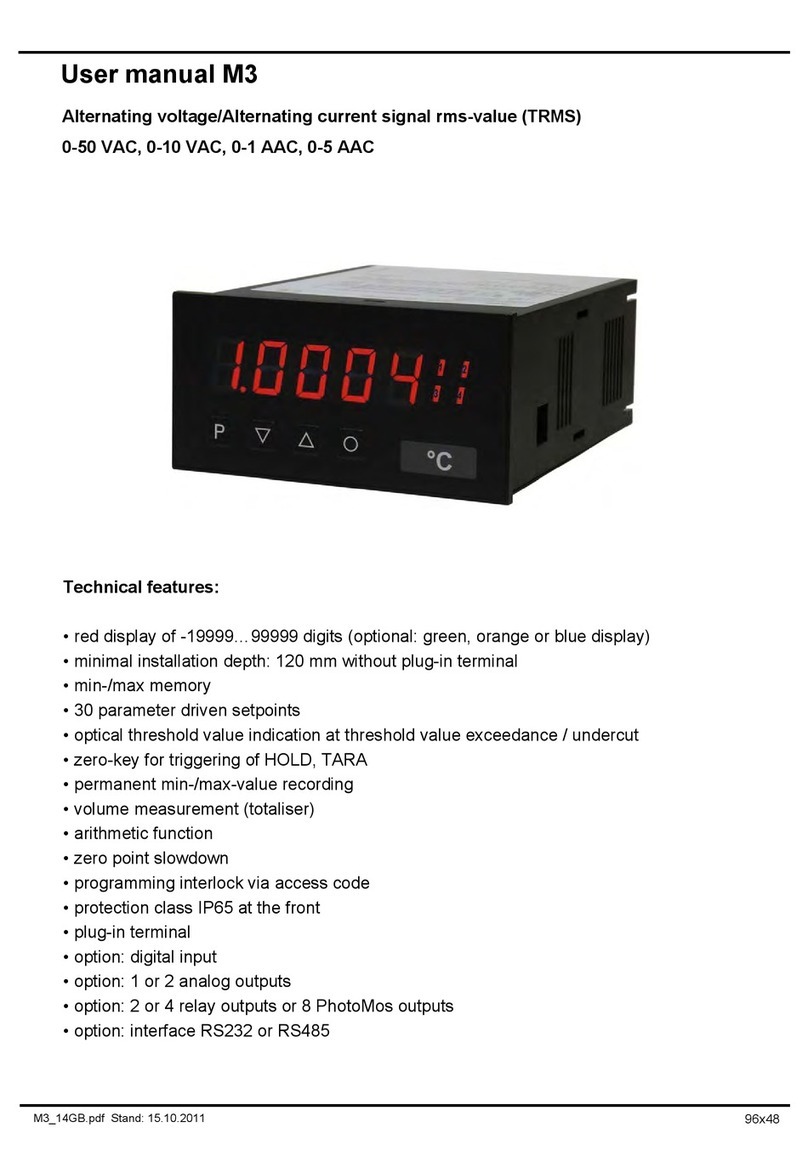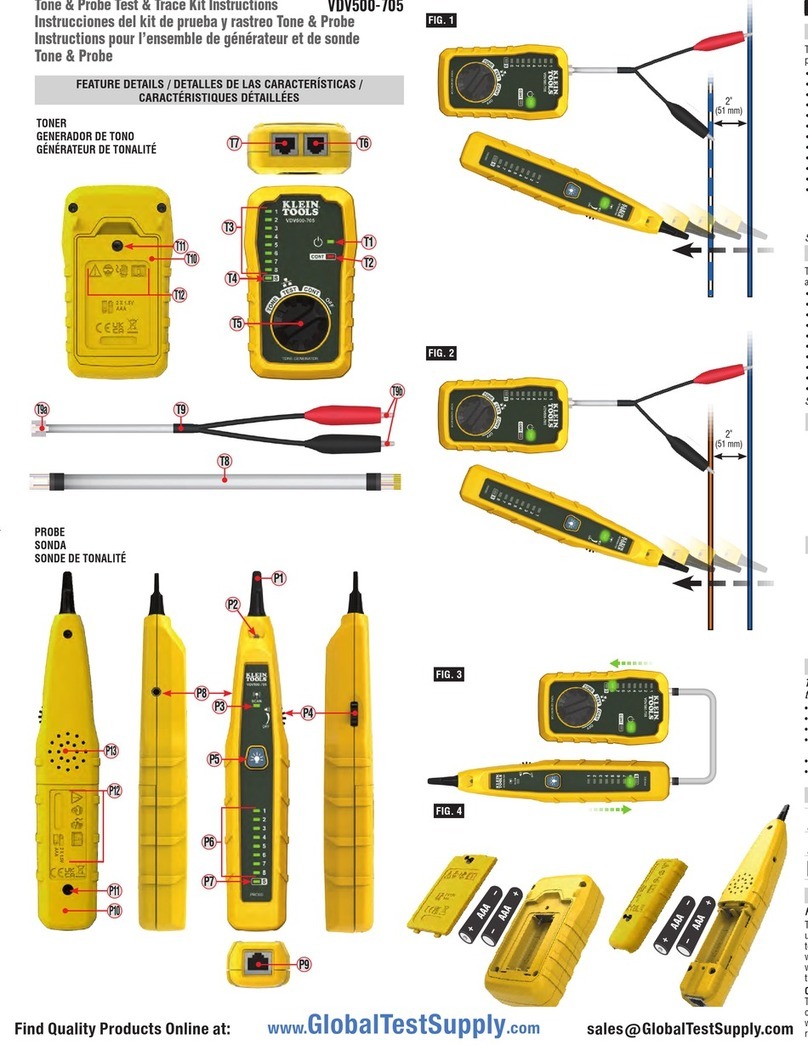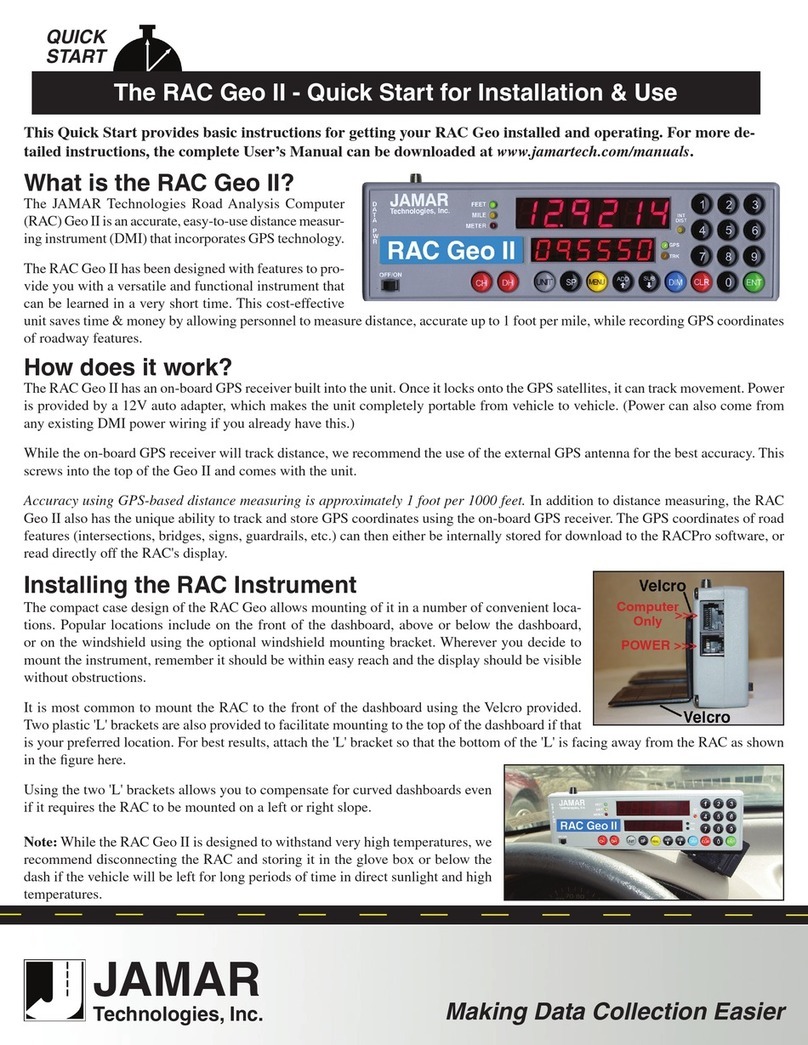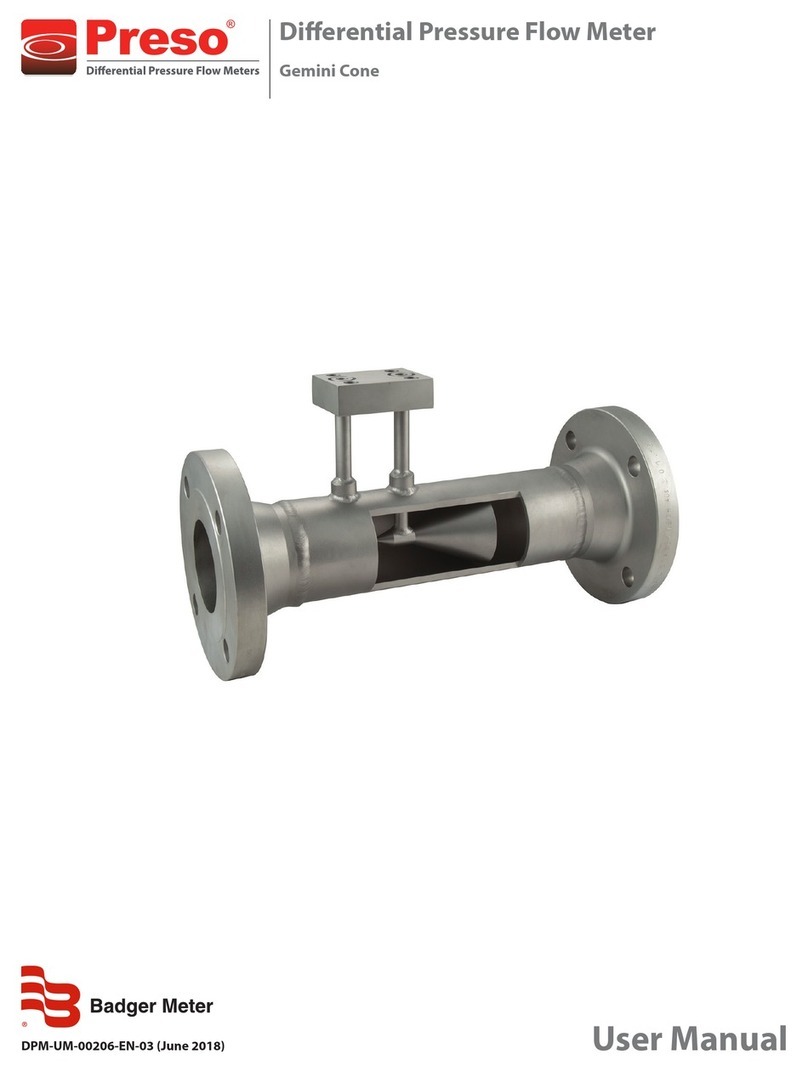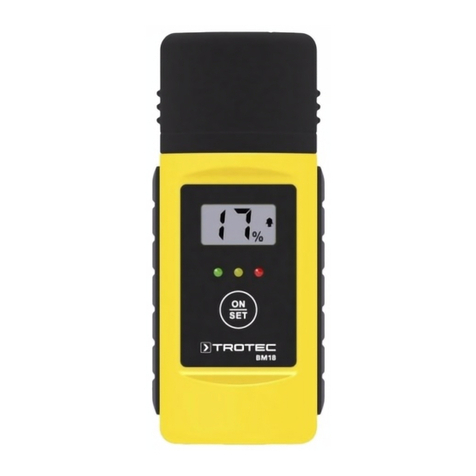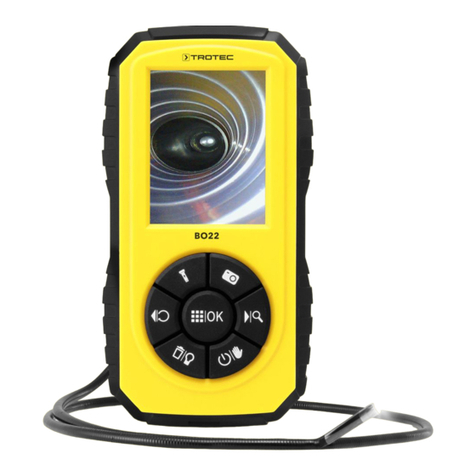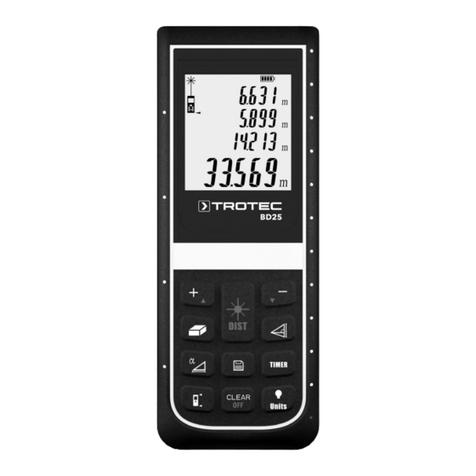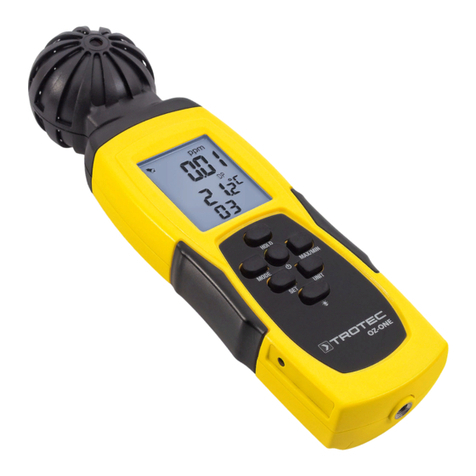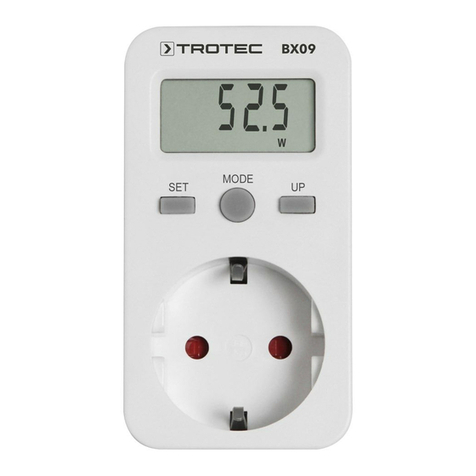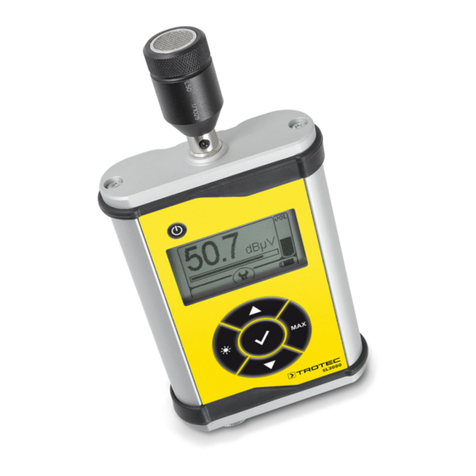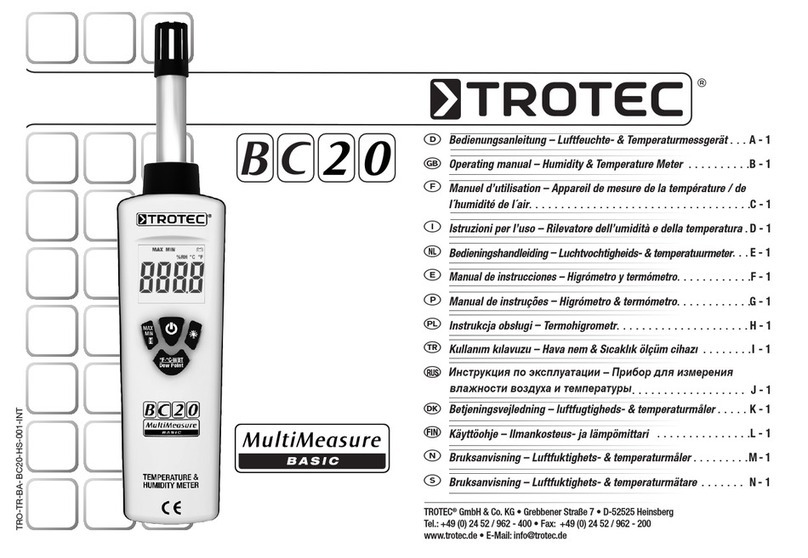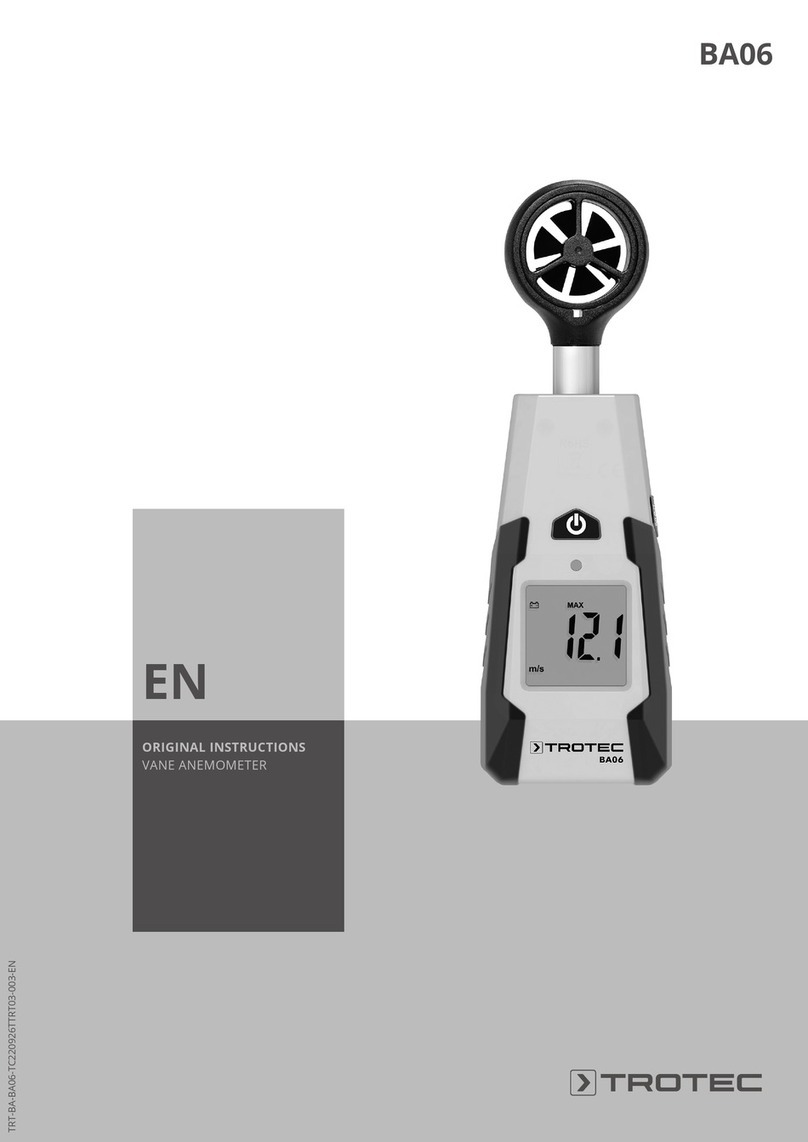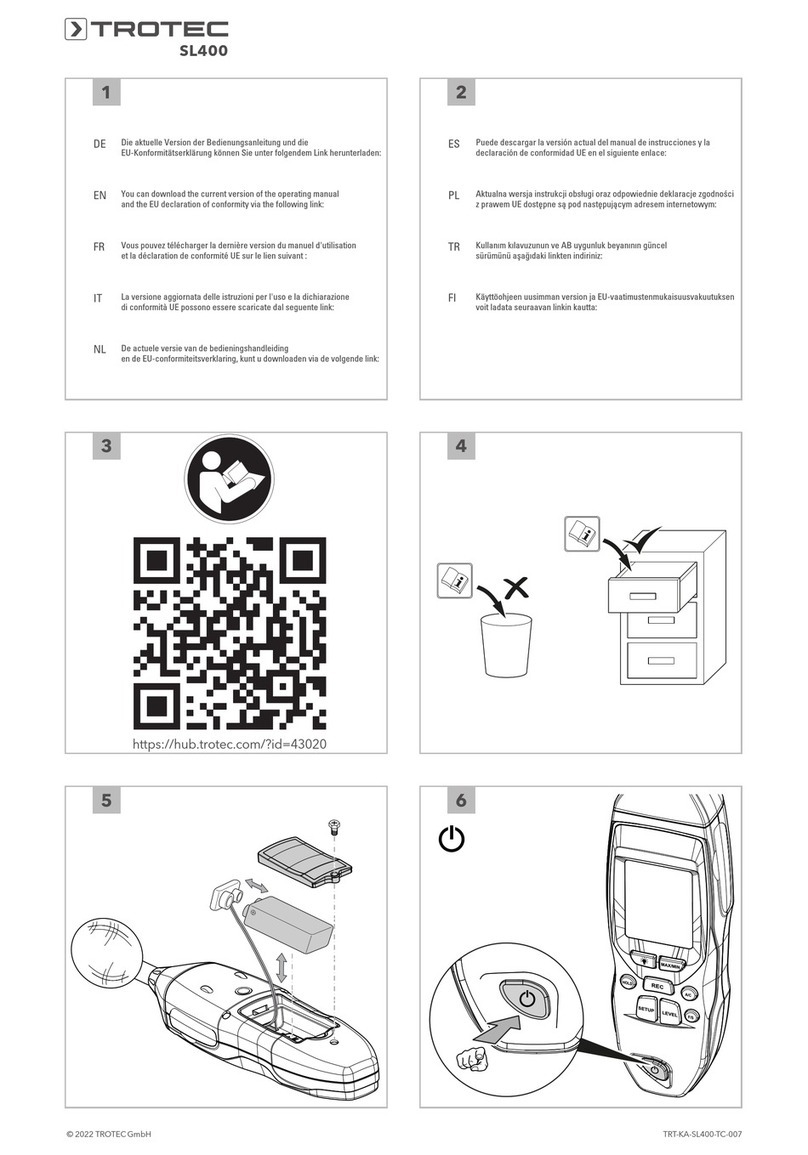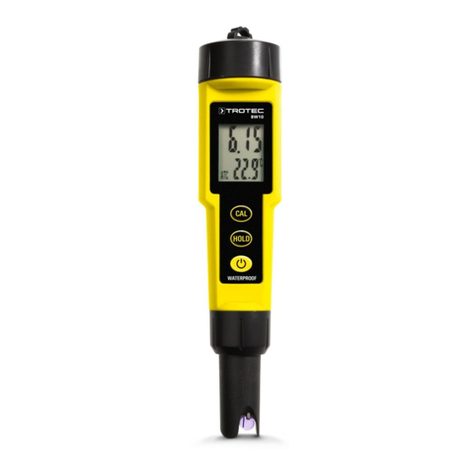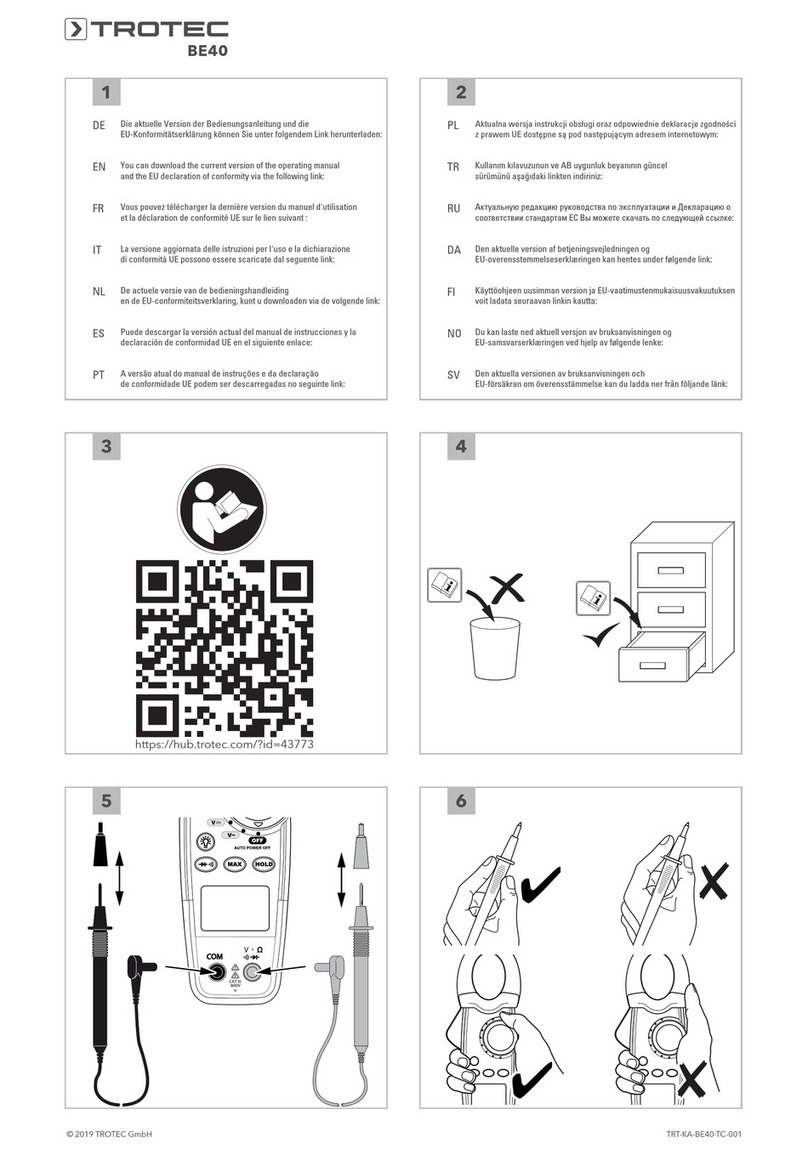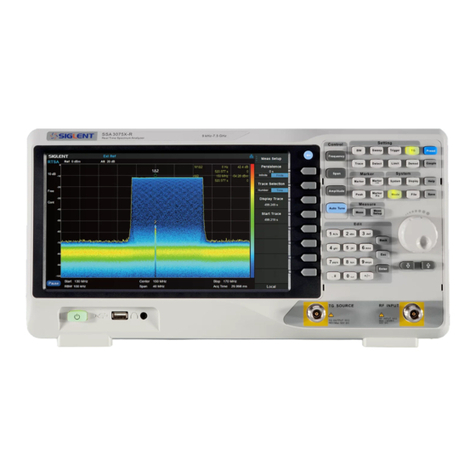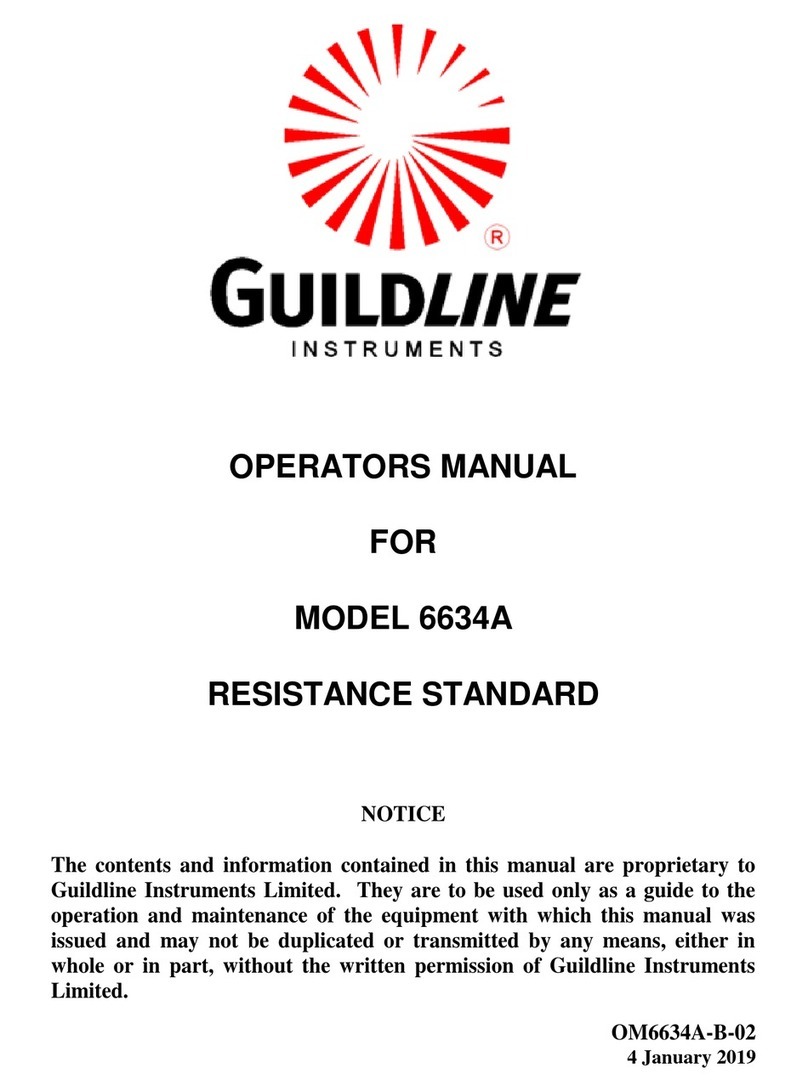
EN 4
Operating manual – thermohygrometer BZ15C
The type of heating and ventilation determines the average
relative humidity level in a flat during the winter. Since cold air
always has a lower absolute moisture content than normal room
air, the humid air can easily be exchanged by fresh, dry air in
the winter by repeated brief and intensive airing throughout the
day. Every living space that is not equipped with a ventilation
system requires air changes several times a day, depending on
the occupancy and moisture emission.
A limitation of the relative humidity to prevent too high humidity
levels is only required during the heating period starting in
autumn. It is recommended to maintain a temperature of
approx. 20°C in the entire flat.
In winter:
In case of average outside temperatures below approx.+5°C,
sufficient air changes and a room temperature of approx.20°C,
a relative humidity level between 40 and 50% can easily be
obtained. If it exceeds 50%, the room should be ventilated.
During frost periods, an indoor humidity level of less than
40%RH is perfectly normal. The upper limit of 40 to 50%RH
(at approx. 20°C) needs to be observed particularly in old
buildings with little thermal insulation, as exceeding this value
for a prolonged time increases the risk of mould formation.
In autumn or spring:
At milder outside temperatures between 5 and 15°C on
average, the humidity level may reach 50 to 60%RH.
Please note:
Relatively speaking, warmer rooms are drier and colder rooms
get more humid. This is why it is recommended to maintain a
room temperature of at least 16°C.
Correct airing:
If your window panes mist up frequently or mould starts to grow
on walls, it is high time to review and, if necessary, break your
old habits. The answers to the following questions can be
useful:
• How often should I air out?
Whenever the hygrometer scale exceeds the colour range
that corresponds to the room temperature, it is a good idea
to air out the room.
• For how long should I air out?
During the winter, at temperatures below approx.+5°C, a
maximum of 5minutes should be sufficient. If the outdoor
air is warmer (5 to 15°C), about 10 to 15minutes of airing
are required.
• How should I air out?
An effective air exchange can only be obtained by leaving a
window or window door in the room wide open. It is not
necessary to create a draught. Airing a room by tilting a
window or door over an extended period of time is
generally insufficient and a waste of energy, especially
considering that the affected room will cool down much
more over time if the temperatures are low.
• What should I do if I am not at home during the day?
Airing your rooms sufficiently while you are at home will
do. Ideally, this means airing out once every morning
before you leave, once when you come home, and once
before you go to bed. It is equally important not to switch
off the heating completely during the day (16 to 18°C).
• Should I also ventilate in case of fog or rain?
This is certainly recommendable. Even very moist, cold air
always has a lower moisture content than normal indoor
air. Besides, you also need a sufficient supply of fresh air
when the weather is damp.
• What do I have to note in the summer?
Except for the basement, you can air out all rooms as
needed. There is no limitation on the hygrometer scale; the
humidity level always corresponds to the outdoor climate.
This is not harmful since the walls (except basement walls)
are usually warm enough to prevent the temperature from
falling below the dew point in normal living areas, and thus
to avoid the formation of condensation e.g. on wall
surfaces, which would promote mould growth.
• How should I air out basement rooms?
Basement rooms are at risk in the summer because during
this season the warm outdoor air contains much moisture,
which precipitates on cold surfaces. In semi-basement
flats, too, airing should be avoided at outside temperatures
above approx.15°C.
• Can I dry laundry in the flat?
The ideal solution is a drying room that can be aired out
permanently (even in the summer or in case of frost). Apart
from that, laundry may only be dried in the flat if the room
is closed and very well heated. The room should be aired
out intensively several times during drying.
• Other rooms
In rooms that are not used as living spaces, or that neither
have a window, nor a forced ventilation or heating system
(garages, pantries, storage rooms etc.), it may be
necessary to actively stabilise or control the climate using
dehumidifiers, air conditioners or heating devices.











